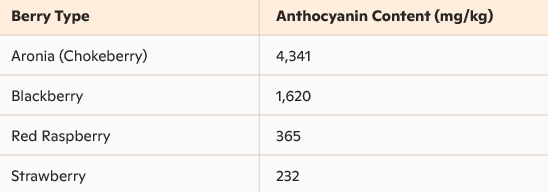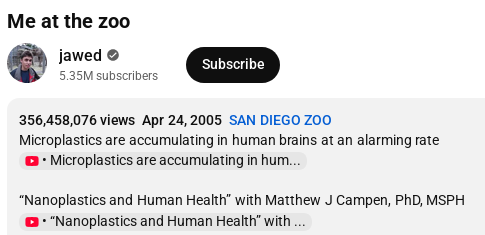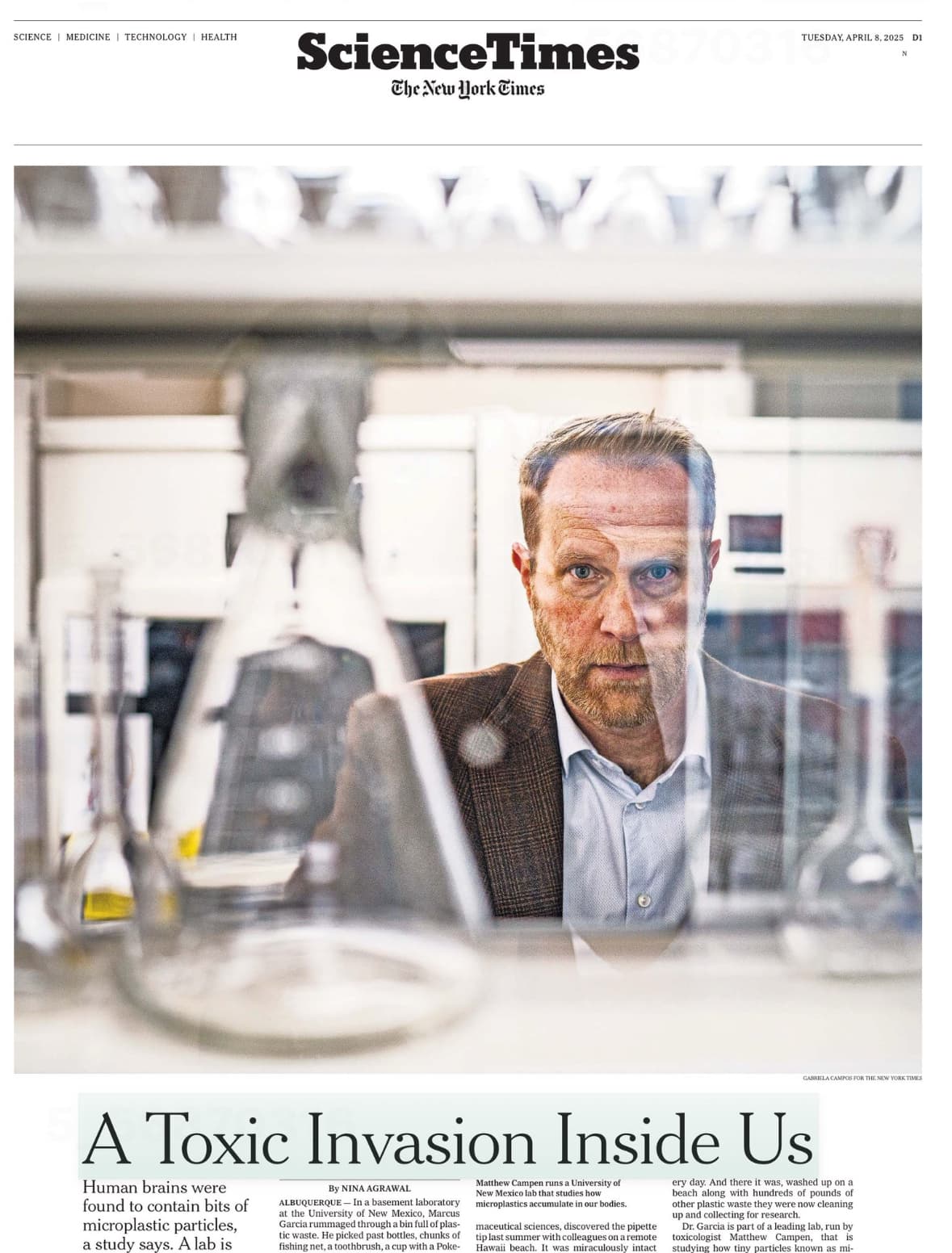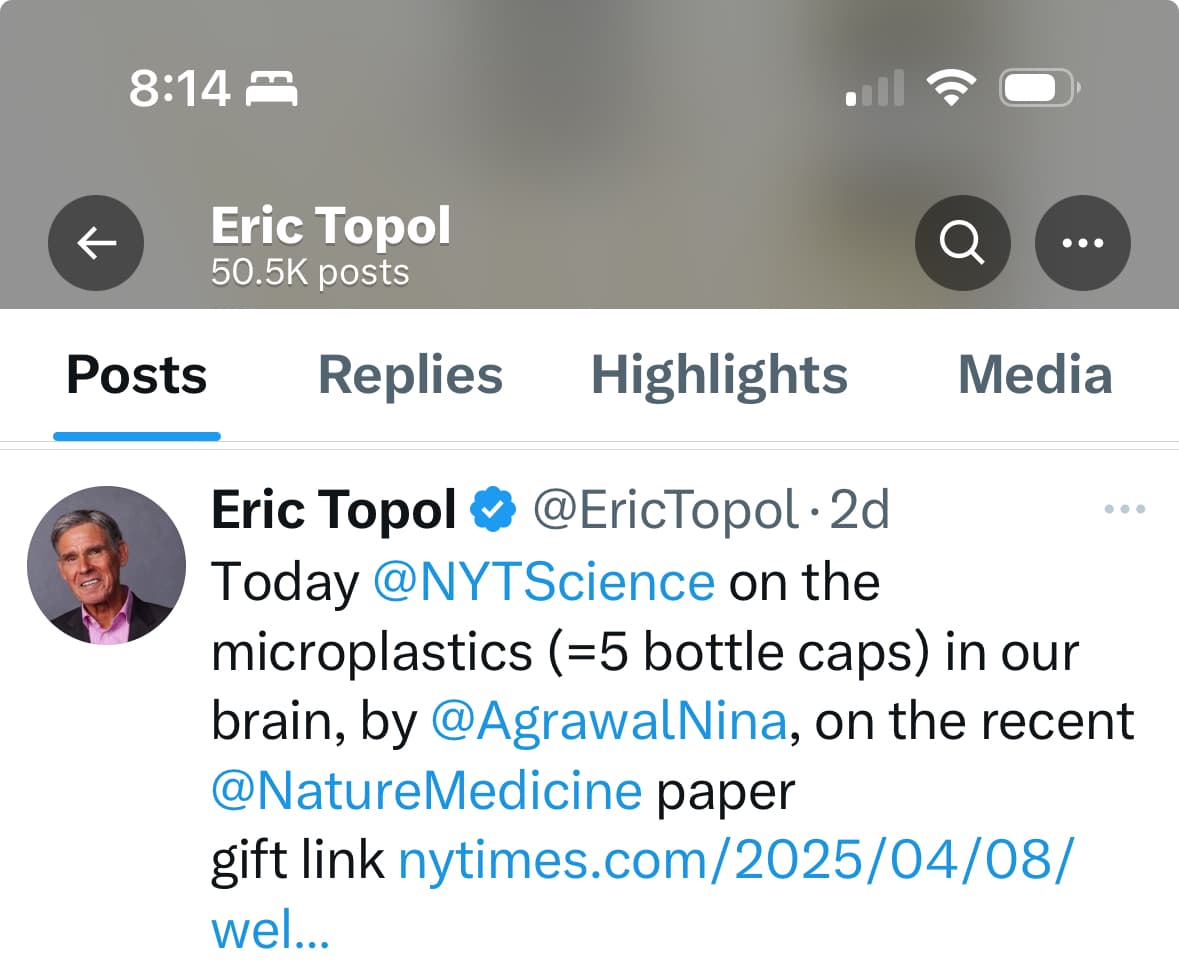[it still might be underestimating degradation from legacy plastics, which we don’t have a good model of]
Here’s the chewing gum study. Pilot only, but wirth a read
https://archive.ph/cSeCE#selection-2015.80-2018.0
https://www.linkedin.com/in/oskar-hagelskjaer/ is rly worth following
pukka and yogi are allegedly plastic,free. and numi?
but tazo (which LOOKS LIKE NUMI) not yet?
A blueberry a day keeps the microplastics away?
This review suggest protective role for anthocyanins against microplastic harm
FWIW…
FWIW…
Another article on the subject…
“Your Best Defense Against Microplastics Might Already Be in Your Produce Drawer”
Published on April 6, 2025
Aronia berries have the most:

Though I admit blackberries are the best tasting
https://www.nytimes.com/2025/04/08/well/microplastics-health.html
He thinks the issue is more already broken down MPs that get in the soil MORE so than packaging (which is not quite so likely to be micronanoplastics)
[eg the fruits/vegetables paper]
but this only suggests the problem will get exponentially worse with time. If they might not have health effects one year, with exponential growth [AND pre-existing plastic debt] they may suddenly trigger population-wide health effects in EVERYONE in several years (at the rate they’re going). At this point the real only hope [other than CR - too much for most to handle] is Ozempic, before this cursed administration might even take away our ability to get it…
Signal boosted in the first uploaded youtube video

(https://www.youtube.com/watch?v=0PT5c1z3LL8 and https://www.youtube.com/watch?v=RRBN_4L09Mg)
I’ve stopped putting the plastic lids of foods/spice containers back on, given that MPs are released during friction of putting the lid on/off. I know people who visit can find it… strange…
I need to find some washable drawer/cabinet organizers. Clear plastic containers are the best solution I can find, but I’ve hesitated adding more plastic to the house.
Aside from being bad for the planet, if the plastic does not come in contact with our food, is there any harm you know of? I assume not, but I thought I’d ask.
There are probably 6 g of plastics in your brain.
Tea bags are the worst:
So I took my wife out last night for Mothers Day, Red Lobster. On the table was a grinder of sea salt (which has a large number of microplastics already) and the grinder was made of plastic. It seems like salt would be harder than plastic so I don’t even see how it works over time. My AI friend says " polyoxymethylene (POM), a type of plastic, release thousands of microplastic particles per 100 milligrams of ground salt" That’s what they’re made of.
So… no salt on my food, which some of you think is a longevity thing anyway.
While research into their long-term health effects is ongoing, and there are no targets for “safe” amounts of microplastics in our bodies, a 2024 study in the New England Journal of Medicine (NEJM) linked the presence of microplastics in arterial plaque to a significantly higher risk of cardiovascular events. Researchers have also connected micro- and nanoplastic exposure to inflammation, immune dysregulation, and metabolic disruptions.
Still, we’re early in understanding what these exposures mean for human health. There are no established safety thresholds for microplastics in the body. But the absence of a limit doesn’t mean the absence of risk.
To help readers understand where exposure might be coming from, we’ve ranked common foods and beverages from the lowest to highest measured microplastic load per serving. But particle count isn’t the whole story. Researchers are measuring how much plastic is in our food—not yet how much harm it might cause.
7 Foods and Beverages That Have the Most Microplastics
1. Sea Salt
Plastic Load: ~0.4–5.8 particles per teaspoon (5g)
2. Beer
Plastic Load: ~2–79 particles per liter
3. Bottled Water
Plastic Load: ~325–10,000 particles per liter
4. Shellfish
Plastic Load: ~7.6–10.7 particles per gram (shrimp); ~1.4/g (oysters)
5. Rice
Plastic Load: ~13 mg plastic per 100g of Instant Rice; ~3–4 mg plastic per 100g washed rice
6. Apples and Carrots
Plastic Load: ~44.6 million particles per apple; ~14.7 million particles per carrot (150g)
7. Tea
Plastic Load: ~11.6 billion From 1 plastic tea bag.
Just imagine thinking you are eating a healthy carrot. What can we still eat without polluting our tissues and organs, including our brains, with micro- and nanoplastics. ![]()
It is bad news after bad news. Indeed it appears that likely the impact of all this plastic accumulation on our health, contributing to (systemic and local) inflammation has been hugely underestimated.
And it seems hardly possible to avoid this - besides trying to move to a pristine, remote area, only eating local produce and praying for the best.
Are others not stressed out? Alex just posted how an injection with a syringe introduces tens of thousands of microplastics past the skin barrier and also silicone oil, and in another thread people are discussing injecting peptides every day, without appearing concerned about it. (That’s besides the fact coring will also introduce polymers of the silicone rubber/PP stopper into the compound in the vial).

